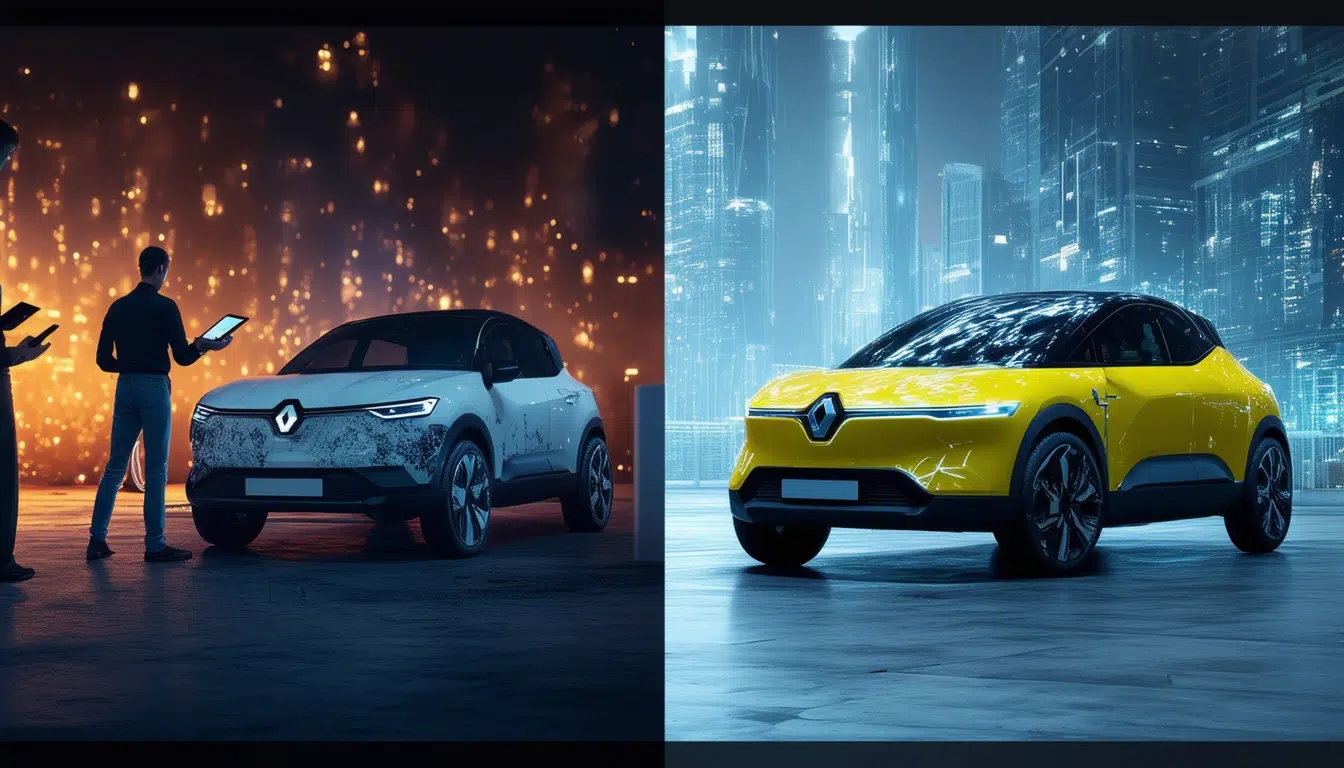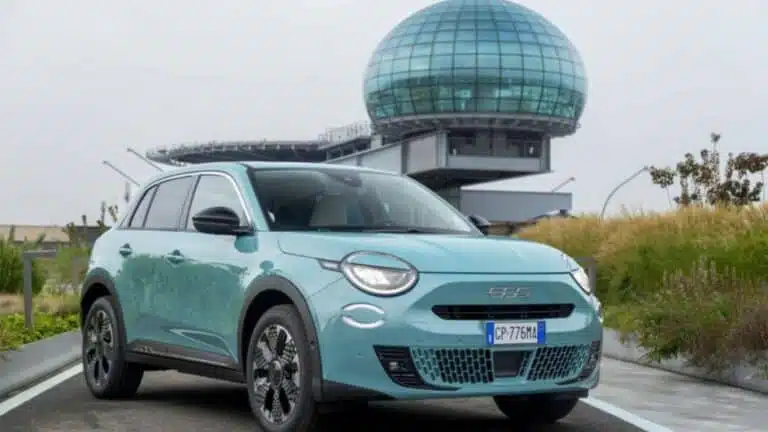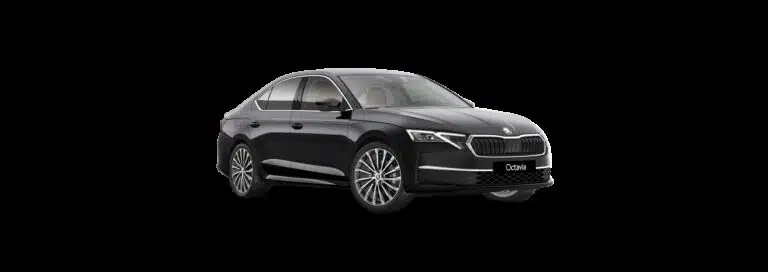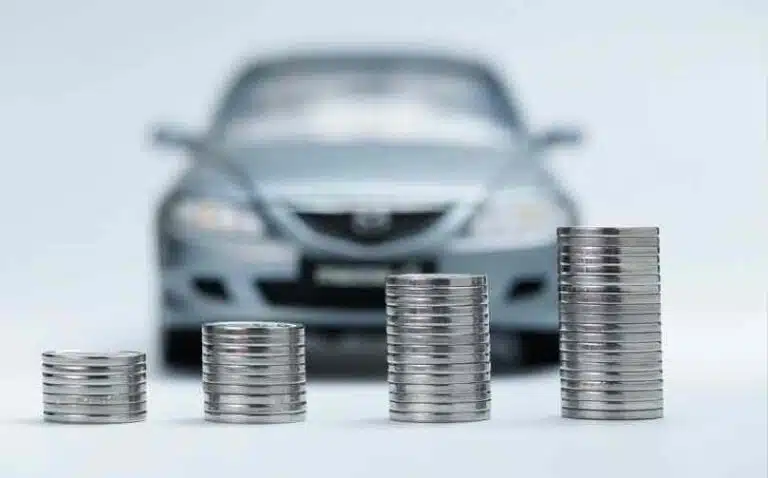Stellantis faces criticism for its electric vehicles, while Renault acknowledges that the new Renault 5 could optimize its energy efficiency.

In the dynamic world of automotive, developers of electric vehicles constantly face new challenges. Stellantis, a prominent player in the industry, has come under fire for the performance of its electric cars, while Renault, with the new Renault 5, aims to exceed expectations in terms of energy efficiency. This contrast highlights the different strategies adopted by manufacturers to address the growing sustainability and performance standards in the automotive sector.
Stellantis, with its focus on multi-energy platforms, faces criticism for the efficiency of its electric vehicles. Meanwhile, Renault stands out with its new dedicated platform, aimed at optimizing the efficiency of the Renault 5. This article will explore the challenges and strategies of both companies, showing how they seek to adapt to the demands of a constantly evolving electric vehicle market.
Stellantis faces criticism for its electric vehicles
In the competitive world of electric vehicles, Stellantis has taken a peculiar path with the adoption of multi-energy platforms. Despite the effort to position the STLA platforms as more suitable for electric cars than combustion ones, criticism for lack of efficiency has not taken long to arise.
Choosing systems that can accommodate different types of propulsion has its advantages in terms of versatility, but it also means that the structures are not fully optimized for the performance of electric vehicles. This has generated internal and external debates about whether the strategy adopted by Stellantis is truly effective or if it should have invested in exclusively electric platforms.
The most significant critique focuses on the difficult balance between development costs and sales volume. Without robust sales of electric vehicles, recovering the investment becomes complicated. This financial component has become the Achilles’ heel of Stellantis, who need to justify their strategy to skeptical investors and customers.
Questioning efficiency
A tangible example of this criticism is the Peugeot e-208. According to Renault, this model, which is part of Stellantis’s range, is less efficient compared to other competitors. Renault’s claim highlights the limited capabilities of multi-energy platforms when facing dedicated architectures.
These types of challenges have forced Stellantis to reevaluate its approach and consider adjustments that could enhance energy efficiency, a crucial point for effectively competing in the sector.
Renault acknowledges that the new Renault 5 could optimize its energy efficiency
In contrast to Stellantis, Renault has taken a decisive step towards completely dedicated platforms. The introduction of the new “AMPR Small” platform, on which the Renault 5 is being developed, exemplifies this shift in focus.
Renault boasts an efficiency that multi-energy platforms cannot achieve, something they have leveraged to stand out against Stellantis. However, they themselves admit that the efficiency of the Renault 5, which reaches 14.9 kWh/100 km, is improvable and that the goal is to achieve consumption of 10.5 kWh/100 km for the future Twingo.
Seeking excellence in efficiency
The pursuit of improving these numbers is one of Renault’s current agendas. The focus on efficiency is not only a commercial strategy but also a commitment to the environment. With plans to integrate these improvements into future models, Renault aims to lead the market with more sustainable and efficient solutions.
This stance places Renault in a competitive position against its rivals, offering vehicles that are not only innovative but also responsible from an energy standpoint. The dedication to an exclusive platform for electric vehicles is a bet that could redefine standards in the industry.
Future perspectives in the electric vehicle market
Both manufacturers are anticipating an increase in sales of electric cars, which will require them to continue innovating and adjusting their strategies to remain competitive. The choice between adjusted or dedicated platforms will continue to be a topic of debate, and the decisions made by these automotive giants will be critical for their future successes.
To learn more about industry trends in electric vehicles and how companies are overcoming similar challenges, visit Revolution on wheels: the future of the electric motor in Mexico.
Future Perspectives for Stellantis and Renault in the Electric Vehicle Market
Currently, Stellantis faces significant criticism regarding its electric vehicles, especially due to the use of multi-energy platforms that fail to match the efficiency of its competitors. Despite its efforts to ensure that its platforms are more electric than combustion, the combination of multiple types of propulsion does not seem to be the most suitable solution to stand out in the fervent market of electric cars.
On the other hand, Renault has adopted a strategy centered on developing dedicated platforms, such as its innovative “AMPR Small,” which is primarily being applied to the Renault 5. However, the French company is not oblivious to opportunities for improvement. Vittorio d’Arienzo, responsible for Renault’s platforms, has noted that although the Renault 5 reaches a competitive figure of 14.9 kWh/100 km, there is potential to further enhance this efficiency.
For this reason, Renault has high hopes for future models like the new Twingo, which is projected to have an average consumption of 10.5 kWh every 100 kilometers. This figure represents an effort by the French manufacturer to achieve a low energy consumption, an increasingly decisive aspect to succeed in a market where efficiency is crucial.
Essentially, the dilemma between using dedicated or multi-energy platforms remains present for car manufacturers. Although dedicated platforms may present a higher cost, they also offer significant advantages in terms of dynamic performance. Stellantis and Renault find themselves in specific positions within this spectrum, each trying to overcome the challenges of the automotive industry and improve their offerings to maintain their relevance as the electric vehicle market continues to expand.





